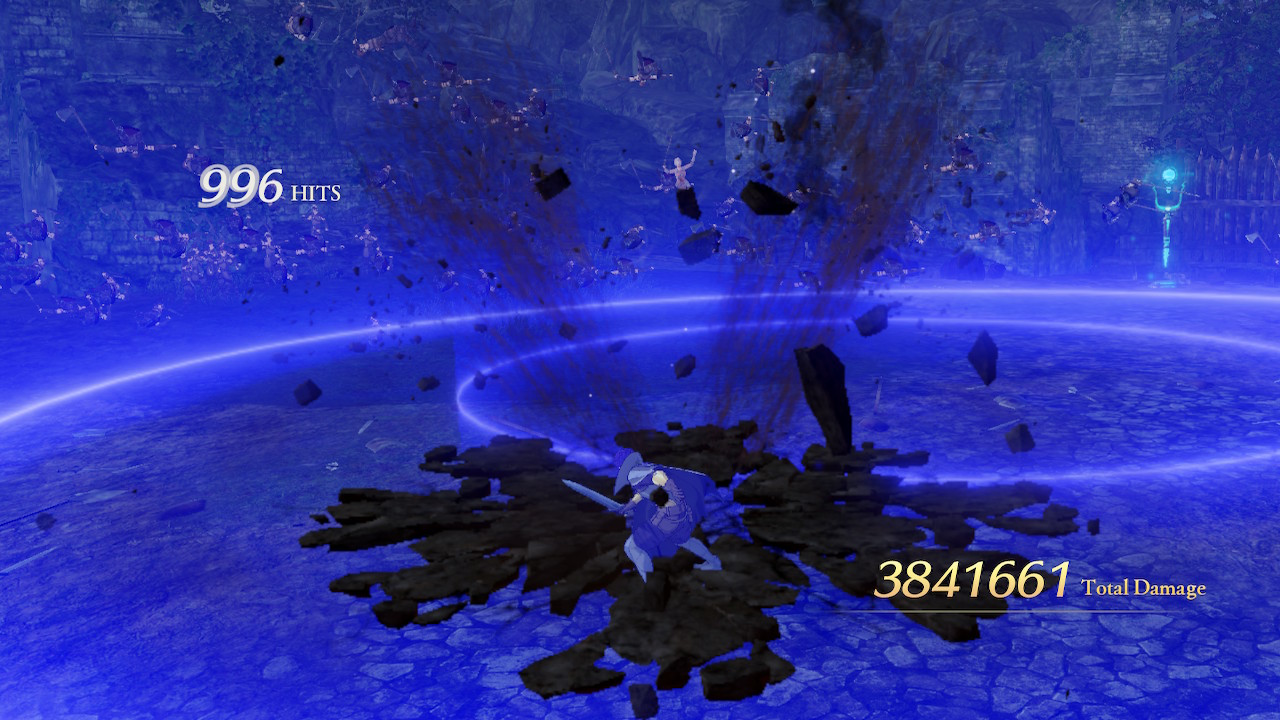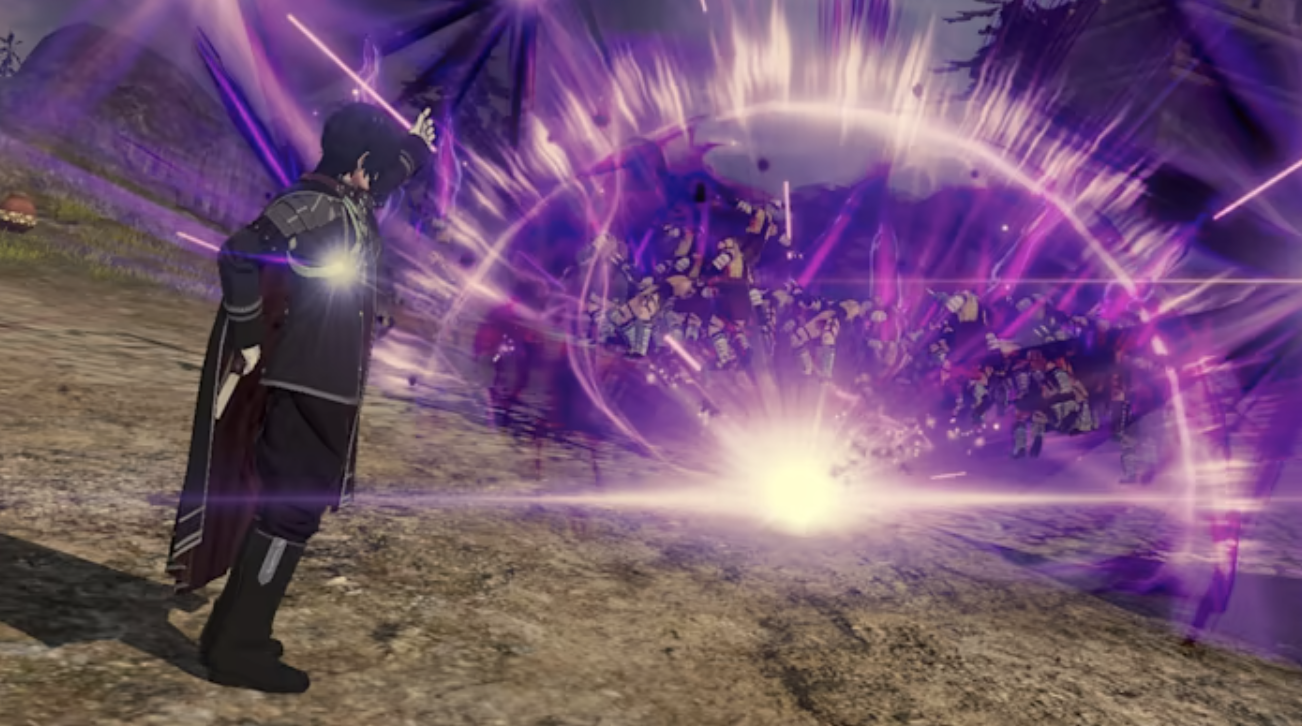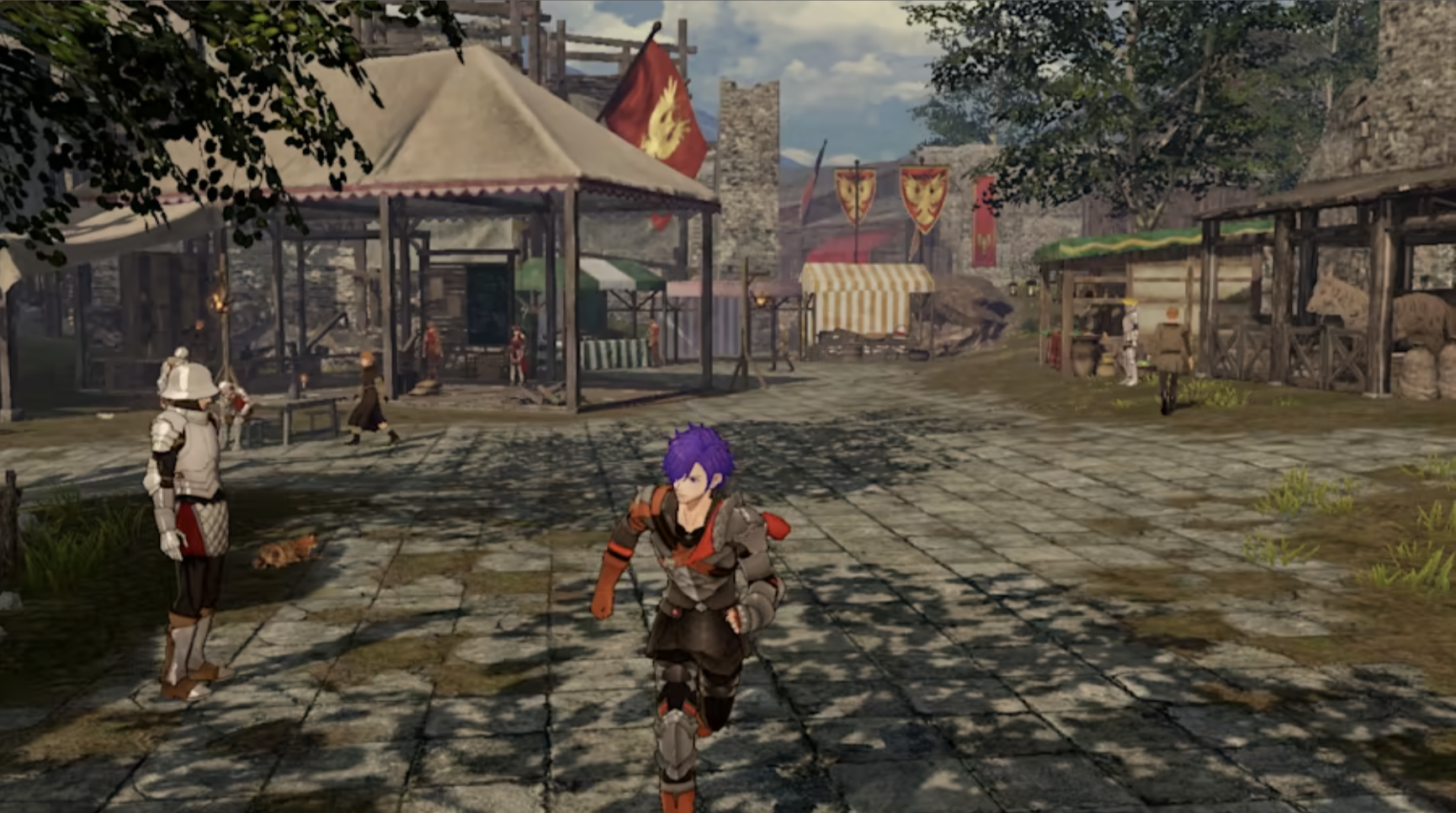I didn’t go to my real high school reunion this week because I was too busy attending one in a video game instead.
That’s not literally the premise of Fire Emblem Warriors: Three Hopes (and also not the only reason I missed the reunion), but Nintendo’s new hack-and-slash spin-off to 2019’s terrific Fire Emblem: Three Houses produced a similar feeling inside me. This is a mind-numbingly stupid game (intentionally so) that slams every pleasure center in the brain like a drum, but none moreso than the one that activates when seeing old friends you’ve missed for years.
I got so much joy out of reuniting with long-lost homies (and mowing down thousands of enemies with them) that it was impossible for me to care about whatever deficiencies it has as an action game. Even if it was just for a few dozen hours, Three Hopes brought me back to the pre-COVID days.
No thoughts head empty just MASH
Fire Emblem is traditionally a series about making careful, tactical choices in a turn-based grid format. Three Hopes, like the unrelated 2017 Fire Emblem Warriors game, is not about that at all. Sure, some of the trappings (unit strengths and weaknesses, optional permadeath for characters who die in battle) are here, but instead of anime chess, Three Hopes is a musou spin-off in the same vein as Nintendo’s recent Hyrule Warriors games.
That means that, like the Dynasty Warriors series that popularized musou as a concept in gaming, you spend dozens of hours buzzsawing your way through enemies that bunch up by the hundreds for their God-given purpose of dying at your hands. They’re virtual fish in a barrel.
In other action games, a combo of 10 hits or more is impressive. Here, combos frequently go into the hundreds or thousands of hits, and the amount of damage you’ll do in one attack is so hilariously high that there’s almost no point in even showing the numbers onscreen.

Credit: Nintendo
But it does, which is great. I did more than 3 million damage in one attack in the tutorial mission because musou games don’t care about stupid norms. This is pure, unadulterated power fantasy where one slash of a sword can annihilate hundreds of faceless dudes in an instant. It’s a far cry from the strategic gameplay of a normal Fire Emblem game, but to Three Hopes‘ credit, the player does have to do a little bit of thinking if they want to succeed here.
Missions are typically set on large, sprawling maps that feature five or six (sometimes more, sometimes less) strongholds to capture, plus a handful of optional side objectives that can pop up at any time and ungodly numbers of enemies to kill. You usually have anywhere from four to nine characters at your disposal (including a protagonist whose gender you can choose at the outset), and each of them uses a weapon that’s strong or weak against whatever weapons the enemies use.
Swords beat axes, axes beat lances, and lances beat swords, while flying units are weak to archers. This is all typical Fire Emblem fare, but when applied to huge battlefields with several powerful enemies of each type occupying strongholds at once, it leads to frantic decision-making that’s materially not much more complicated than rock-paper-scissors, but at least gives you something to think about during fights.

Credit: Nintendo
In other words, since you can’t be everywhere at once, you frequently have to open the map and order people to complete objectives based on what best suits them.
It’s a simple tactical layer compared to anything in a normal Fire Emblem game, but it does a lot to dull the repetition of going scorched earth on a bunch of anonymous goobers. The combat itself is satisfying, with strong variety between characters. Some classes reward rhythmic button presses with attack buffs, while others encourage the most madcap button mashing in all of video games. Even with the variance between characters, it would get boring without the ability to give orders or even take direct control of your subordinates from time to time.
Put simply, this is a very good musou game. It’s not treading any new ground mechanically, however. What really puts Three Hopes over the top is the fun of seeing all the homies again.
But really, it’s all about friendship
When Fire Emblem: Three Houses launched in the summer of 2019, I was going through what I would, for a time, call the worst year of my life. Obviously, that didn’t last long thanks to everything that’s happened since then, but it was rough! The stress of a new job, trying to maintain a relationship that ultimately fell apart, and a ferocious gyre of BS in my social circle made my last pandemic-free summer one to remember for the wrong reasons.
Three Houses was a rare bright spot in that darkness. I quickly fell in love with Golden Deer, one of the three factions you can choose to ride with for the entire duration of its story. Its effortlessly cool, down-to-earth leader Claude was one of my favorite game characters in years, and that’s not to mention the fashionable axe-wielder Hilda or himbo extraordinaire Raphael. So when I realized Three Hopes gives you the same choice between the same three factions early in its story, I was sold immediately.
There’s an extensive amount of not-fighting-dudes in Three Hopes, as you’ll sometimes spend upwards of half an hour running around your base camp between missions. You can cook meals or do chores with friends, take them on expeditions that end in cute little picnic conversation sequences, or simply furnish them with gifts. Maintaining the army’s equipment or tending to its horses with your closest buds isn’t in the traditional wheelhouse of video game “fun,” but I got a little jolt of energy out of doing it in a game where I wouldn’t expect to see that.

Credit: Nintendo
Like in Three Houses, each character has a friendship ranking with both the protagonist and with their other comrades. You’ll spend a lot of time seeing these people grow to understand each other through cutscenes that play each time the ranking goes up. Whether it’s learning about one person’s debt problems or another person’s familial insecurities, these cutaways add a great deal of color to the experience.
It’s these little moments that elevate Three Hopes just a bit above what I would normally expect from a game of this type. I didn’t realize just how much I missed Claude, Hilda, Raphael, or even members of the other factions like the songstress Dorothea or the ponytailed swordsman Felix.
Going back to the high school reunion metaphor, it’s heartening just to see people you’d forgotten about, even if you didn’t particularly love them back when they were a bigger part of your life. “Oh hey, it’s that guy!” is a cheap thrill, but in this case, it works. In a very small way, Three Hopes reminded me of that tumultuous summer, one I would happily return to given the chance because, for as miserable as it was, at least we weren’t surrounded by deadly illness and a total lack of concern by many about mitigating it.
That this dynamic just happened to play out in a pretty fun action game is a nice bonus. Three Hopes is the video game equivalent of meeting up with folks you haven’t seen in years, throwing a hellacious rager together, and then not thinking about it ever again. It may not land on many game of the year lists, but I probably won’t play anything else this year that transports me back to a period that was much, much better than I realized at the time.












